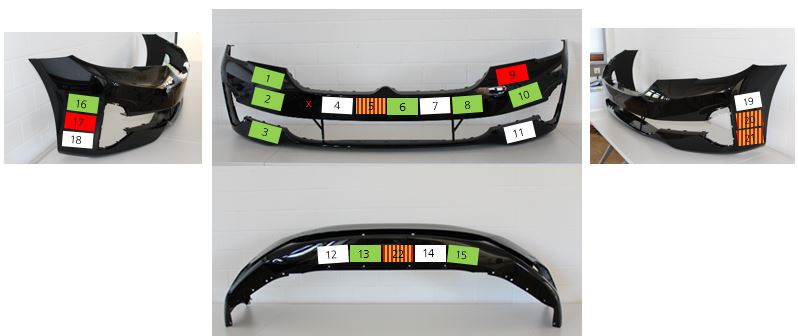
Optimizing Primerless Coatings for PP Components in the Automotive Industry

In short
Cleaning and activation processes were investigated in a project on primerless coating of PP components for automotive applications. The aim was to achieve optimal adhesion even with a reduced number of layers. The water jet test based on ISO 16925 has been further developed to enable better differentiation of the results.
In detail
Primerless Coatings for PP Automotive Parts – More Efficient, More Sustainable, More Cost-Effective
Polypropylene (PP) plastics are a key material in automotive manufacturing thanks to their excellent strength-to-weight ratio. Components made from this material are coated in a complex process - conventionally in three layers including a primer. Despite strict production standards, adhesion failures remain a recurring challenge.
As part of a joint research and development project between Fraunhofer IPA, FILK Freiberg Institute GmbH, and the Leibniz Institute for Polymer Research Dresden (IPF), various types of plastic substrates, as well as cleaning and activation processes were investigated and compared to ensure consistent performance even with a reduced number of layers (from three-layer to two-layer coatings, thereby increasing efficiency).
Focus: Factors Influencing Adhesive Strength in Primerless Coatings
The work systematically examined:
- the substrate composition and manufacturing processes of PP components,
- various cleaning and activation methods prior to coating, and
- the evaluation of adhesive strength using practical test methods
At Fraunhofer IPA, a major focus was on water-jet testing in accordance with DIN EN ISO 16925. This was based on the OEM standards of two leading automotive manufacturers, which differ in parameters such as pressure, nozzle distance, cutting/scratching methods (for defined surface damage) and test duration, and were modified to meet the project requirements.
Optimized Test Method for Detailed Evaluation of Pretreatment
The standard test methods proved to be insufficiently sensitive to reliably evaluate differences between cleaning or activation processes. Only through extensive test series and the development of refined test parameters was it possible to sufficiently differentiate the substrates and process parameters during cleaning and activation for comparative analysis.
The result: a robust, industry-transferable method for the differentiated evaluation of primerless coating systems.
Added value for the industry:
- Reduced process costs by eliminating primers
- Increased sustainability thanks to reduced material and energy consumption
- Improved process reliability through more informative testing methods
- Insights into cleaning and activation processes as the key to adhesive strength
- Greater cost-effectiveness and environmental friendliness for PP component coating in the automotive industry
Find more information about the project in the technical article „Primerlose Beschichtungssysteme richtig testen“ (only in German).
Insights into the project
